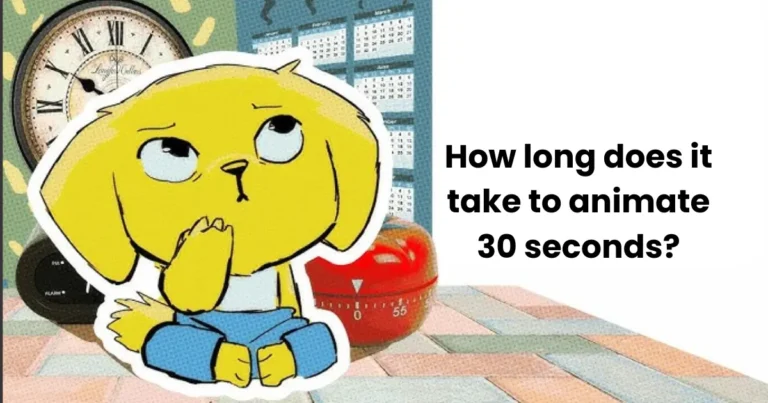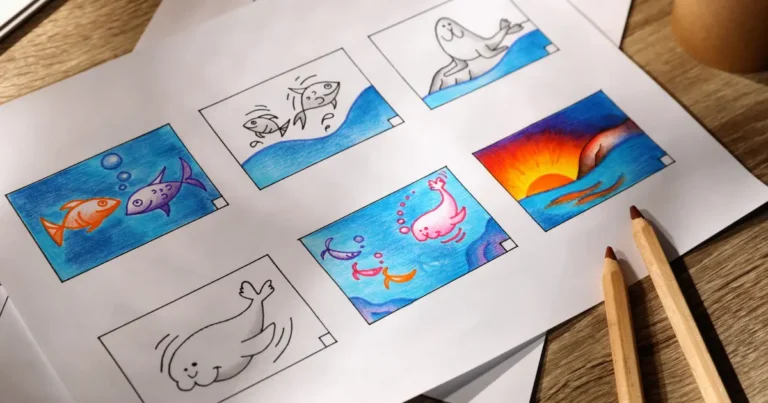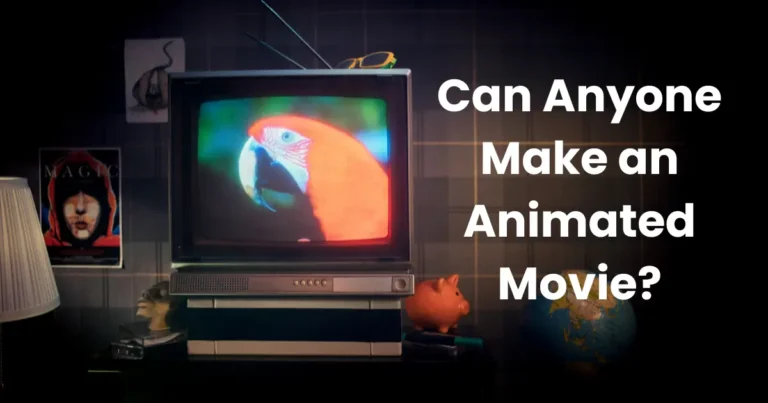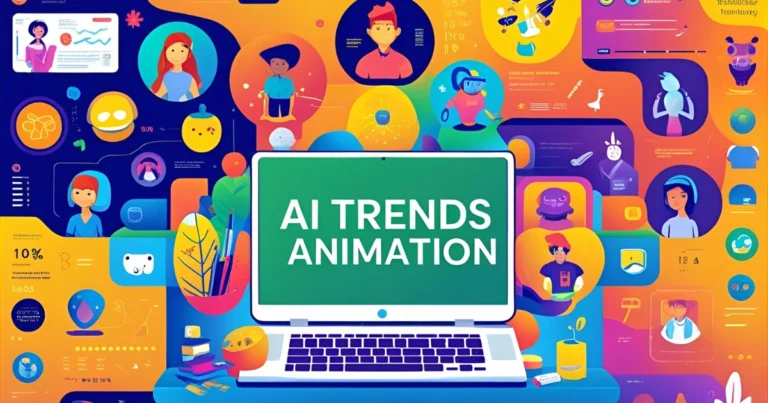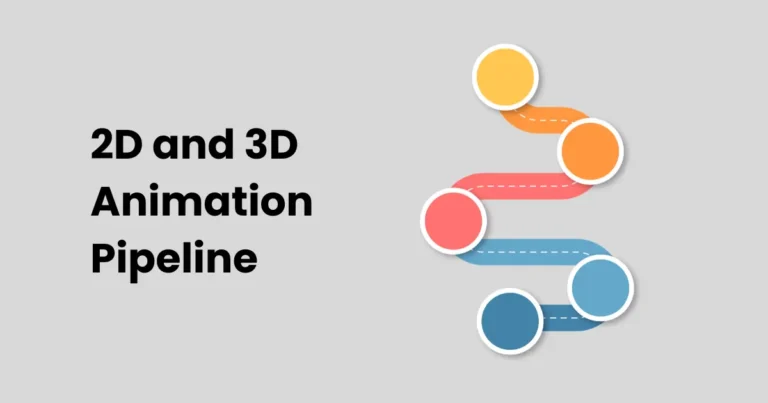What is Animated Psychology? | impact of psychology in animation
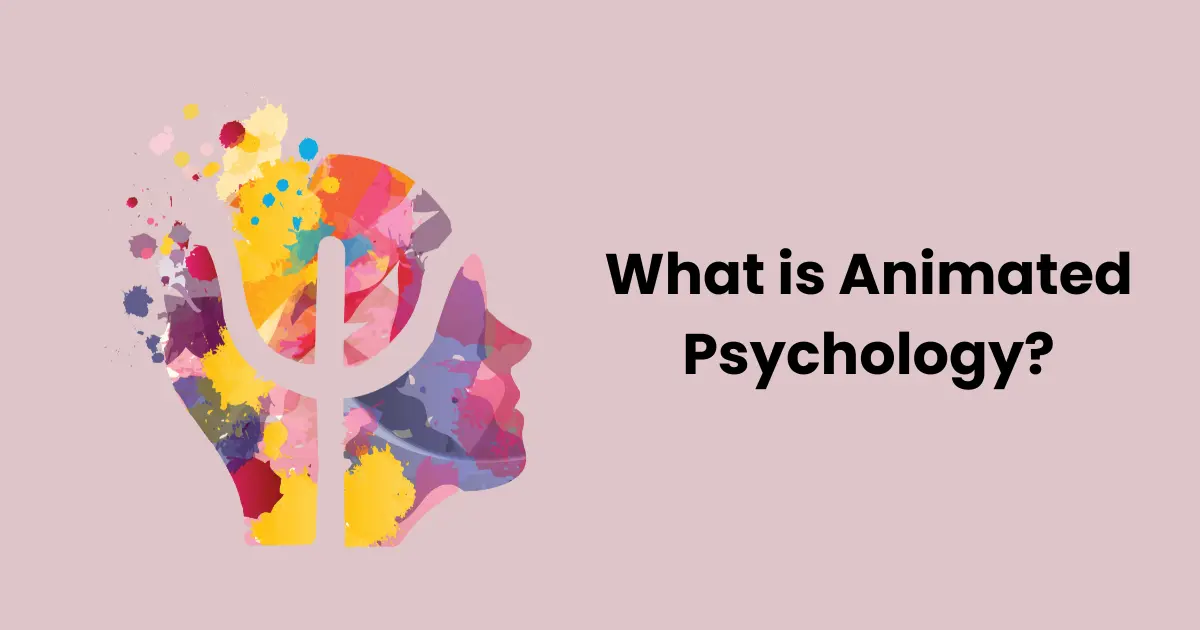
Contents
- 1 Historical Context of Animated Psychology
- 2 Applications of Animated Psychology
- 3 Techniques in Animated Psychology
- 3.1 1. Storytelling and Visualization
- 3.2 2. Emotional Engagement Through Animation
- 3.3 3. Animated Avatars in Therapy
- 3.4 4. Behavioral Simulation
- 3.5 5. Animation in Psychoeducation
- 3.6 6. Gamification and Interactive Animation
- 3.7 7. Animation in Virtual and Augmented Reality
- 3.8 8. Motion Graphics for Mindfulness and Relaxation
- 4 Benefits of Animated Psychology
- 5 Challenges in Animated Psychology
- 6 Future Trends in Animated Psychology
- 6.1 1. Integration of Artificial Intelligence (AI) in Animated Psychology
- 6.2 2. Expansion of Virtual Reality (VR) and Augmented Reality (AR)
- 6.3 3. Increased Gamification of Psychological Concepts
- 6.4 4. Cross-Cultural and Inclusive Animation Design
- 6.5 5. Biometric Integration in Animated Psychology
- 6.6 6. Animated Psychology in Digital Therapeutics
- 6.7 7. Advanced Storytelling Techniques
- 6.8 8. Broader Use in Corporate and Professional Training
- 6.9 9. Open-Source and Collaborative Animation Platforms
- 6.10 10. Longitudinal Studies on Effectiveness
- 6.11 Conclusion
Animated psychology is an innovative field that combines animation with psychological principles to explore, explain, and enhance human behavior, emotions, and mental processes. It leverages the engaging and illustrative power of animation to simplify complex psychological concepts, making them accessible to diverse audiences. From animated therapy sessions to educational content, this field is reshaping how we understand and address psychological phenomena.
Animation is a powerful tool for communication and understanding. Its dynamic nature allows for the visualization of abstract ideas, which can often be difficult to convey through static text or imagery. For example, animations can effectively demonstrate emotional expressions, thought processes, or mental health conditions, bridging the gap between theory and practice. Animated psychology is not just about explaining concepts but also about creating emotionally engaging narratives that resonate with individuals, fostering deeper understanding and connection.
This field is gaining traction as psychologists, educators, and content creators recognize its potential to influence mental well-being, learning, and self-awareness. By combining the science of psychology with the artistry of animation, animated psychology offers a unique platform for education, therapy, and public engagement.
Historical Context of Animated Psychology

The Evolution of Animation in Psychological Studies
The roots of animated psychology trace back to the early 20th century, when psychologists began using visual tools to explain human behavior. Early experiments, such as Joseph Plateau’s phenakistoscope and Eadweard Muybridge’s motion studies, showcased how sequential images could simulate movement and capture the essence of human actions. These experiments inspired the use of animation as a medium to visualize psychological concepts in dynamic and relatable ways.
By the mid-20th century, animations became more sophisticated, allowing psychologists to depict complex theories such as Pavlov’s conditioning experiments or Freudian psychoanalysis. With the rise of educational psychology, animated sequences were integrated into training materials, helping learners grasp challenging ideas like cognitive development or emotional regulation.
Key Pioneers in Animated Psychology
Several pioneers have shaped the trajectory of animated psychology. In the 1940s, Fritz Heider and Marianne Simmel conducted a groundbreaking study using simple animated shapes to demonstrate human tendency to attribute emotions and intentions to movement. This study, known as the Heider-Simmel experiment, remains a classic example of how animation can unravel human perceptions and cognitive biases.
In the 1970s and 1980s, animations gained momentum in clinical psychology. Therapists used animated role-playing scenarios to help clients visualize coping mechanisms and understand interpersonal dynamics. Animators also collaborated with psychologists to create public awareness campaigns, using engaging visuals to promote mental health education.
Modern Developments
The digital revolution of the 21st century brought significant advancements to animated psychology. Modern tools like 3D animation software, virtual reality (VR), and augmented reality (AR) have elevated the medium’s capabilities. Today, animations are used in therapy apps, educational modules, and even experimental research, making psychology more interactive and accessible than ever before.
Animated psychology’s historical evolution highlights the enduring synergy between art and science, continually opening new doors for understanding the human mind.
Applications of Animated Psychology

1. Animated Therapy Sessions
Animation is increasingly being used in therapy to help clients explore their emotions and mental states in a non-threatening, engaging way. Animated characters and scenarios allow individuals to visualize their thoughts and feelings, making abstract concepts more tangible. For example:
- Children with anxiety or trauma can use animated tools to express themselves without verbalizing their experiences directly.
- Cognitive-behavioral therapy (CBT) apps often include animated simulations that teach users how to challenge negative thoughts and develop healthier coping strategies.
2. Educational Tools for Psychological Concepts
Animations are effective in teaching psychological principles, particularly in academic and professional settings. They help simplify complex topics like neural pathways, memory processes, and behavioral patterns. Examples include:
- Animated videos explaining psychological disorders for students and educators.
- Interactive animations in online courses that allow users to manipulate variables and observe behavioral outcomes in simulated environments.
3. Animated Narratives in Behavioral Studies
Psychologists often use animations to study human behavior and cognition. Animated scenarios are crafted to elicit specific responses, helping researchers explore how people perceive emotions, intentions, and social interactions. For instance:
- Experiments using animated characters to study empathy or bias.
- Simulated environments for testing reactions to stress, decision-making, or group dynamics.
4. Enhancing Emotional Engagement
Animations are a compelling medium for storytelling, making them ideal for creating emotionally engaging content. By using relatable characters and narratives, animations can effectively communicate psychological concepts to the general public. For example:
- Public awareness campaigns on topics like depression, stress management, or substance abuse often feature animations to appeal to a broader audience.
- Mental health organizations use animated videos to reduce stigma and promote help-seeking behaviors.
5. Virtual Reality (VR) and Animated Psychology
The integration of animation with VR technology has opened new frontiers in therapeutic and educational applications. Animated VR environments provide immersive experiences that help individuals confront fears, practice social interactions, or learn new skills. Examples include:
- Virtual exposure therapy for phobias, where patients interact with animated scenarios in controlled environments.
- Training modules for healthcare professionals, simulating patient interactions through animated role-plays.
6. Animated Self-Help Tools
Many mental health apps and platforms use animations to deliver mindfulness exercises, relaxation techniques, and psychoeducation. These animations are designed to be visually appealing and easy to follow, encouraging consistent user engagement.
The versatility of animated psychology makes it a transformative tool in mental health, education, and research, bridging the gap between complex theories and practical applications.
Techniques in Animated Psychology

1. Storytelling and Visualization
Storytelling is at the core of animated psychology, making complex ideas relatable and easier to understand. By combining narratives with visual elements, animations create engaging scenarios that resonate emotionally with viewers. Techniques include:
- Metaphorical storytelling: Using symbolic characters and settings to represent abstract psychological concepts like anxiety or resilience.
- Sequential visualization: Breaking down processes such as cognitive development or emotional regulation into step-by-step animated sequences for clarity.
2. Emotional Engagement Through Animation
Animations evoke emotions through carefully crafted visual and auditory elements, making psychological content more impactful. Techniques to achieve this include:
- Character design: Creating relatable animated figures that embody specific emotions or behaviors.
- Color psychology: Using colors to influence mood and reinforce the emotional tone of the animation. For example, warm tones can evoke positivity, while cool tones may convey calmness or melancholy.
3. Animated Avatars in Therapy
Animated avatars serve as a medium for clients to express their inner thoughts or practice social interactions. These customizable characters create a safe, judgment-free environment for exploring emotions. Common techniques include:
- Role-playing: Clients use avatars to act out scenarios, helping them develop coping strategies or rehearse conversations.
- Biofeedback integration: Animated avatars change expressions or body language based on real-time physiological data, such as heart rate, during mindfulness exercises.
4. Behavioral Simulation
Simulated environments and characters allow psychologists to study or teach behavioral responses. These animations often include realistic scenarios or abstract depictions to explore human reactions. Examples include:
- Interactive animations: Users can alter variables in a scenario to observe different psychological outcomes, such as stress levels or decision-making patterns.
- Behavioral mimicry: Animations replicating human behaviors to study empathy, bias, or interpersonal dynamics.
5. Animation in Psychoeducation
Animations simplify psychoeducation by visually representing psychological theories, conditions, or treatment techniques. Techniques include:
- Layered animations: Gradually introducing elements to build understanding, such as showing the stages of grief or steps in cognitive restructuring.
- Analogical visuals: Using familiar analogies like a “stress bucket” to explain abstract ideas in relatable terms.
6. Gamification and Interactive Animation
Gamified animations combine interactive storytelling with psychological principles to engage users. Techniques used here include:
- Animated feedback loops: Providing users with instant visual responses to their choices or actions, reinforcing learning and behavioral change.
- Choice-driven animations: Allowing users to make decisions within a narrative, teaching cause-and-effect relationships or emotional intelligence.
7. Animation in Virtual and Augmented Reality
Advanced technologies like VR and AR integrate animations into immersive environments for therapy, training, and research. Techniques include:
- 3D animation for exposure therapy: Simulating phobia-inducing situations to help clients confront fears in a controlled setting.
- Augmented reality overlays: Animating psychological concepts, such as stress levels or emotional states, in real-world settings through AR devices.
8. Motion Graphics for Mindfulness and Relaxation
Motion graphics, like flowing water or abstract shapes, are widely used in mindfulness apps and relaxation exercises. Techniques include:
- Repetitive, rhythmic motion: Creating calming effects to help users focus and reduce anxiety.
- Visual breathing cues: Animations that sync with guided breathing exercises to promote relaxation.
By employing these techniques, animated psychology transforms abstract psychological theories into accessible, engaging, and impactful tools for therapy, education, and research.
Benefits of Animated Psychology

1. Simplifies Complex Psychological Concepts
Animated psychology breaks down intricate ideas into visually engaging and easily digestible content. By using characters, scenarios, and dynamic visuals, it makes abstract theories and mental processes more relatable and understandable, benefiting both professionals and the general audience.
- Example: Animations depicting brain functions during stress help non-experts grasp the science behind emotional reactions.
2. Enhances Emotional Engagement
Animations evoke empathy and emotional connection through storytelling and expressive visuals. This engagement helps individuals relate to the material, making it more memorable and impactful.
- Example: Animated narratives about mental health challenges encourage viewers to seek help or support loved ones.
3. Creates a Safe Space for Expression
Animations, particularly in therapeutic settings, provide a non-threatening platform for individuals to explore and express their emotions. Animated avatars or characters act as proxies, enabling users to open up without feeling judged.
- Example: Children with trauma can use animated tools to depict their feelings indirectly.
4. Promotes Accessibility in Learning
Animated psychology ensures that psychological concepts are accessible to diverse audiences, regardless of age, education level, or cultural background. Visual storytelling and simple language help convey universal messages.
- Example: Schools use animated videos to teach students about emotional intelligence and coping skills.
5. Boosts Retention and Understanding
Studies show that visual and auditory learning significantly enhance retention rates. Animations leverage this by combining vibrant visuals with narrated explanations, reinforcing the learning process.
- Example: Animated infographics explaining therapy techniques improve patients’ adherence to treatment plans.
6. Facilitates Therapeutic Techniques
Animated psychology is increasingly used in therapeutic interventions. It helps clients visualize coping mechanisms, rehearse social interactions, or confront fears in a controlled, animated environment.
- Example: Virtual reality (VR) animations simulate anxiety-inducing scenarios to help clients practice stress management techniques.
Animated psychology is revolutionizing how we approach mental health, education, and research. Its versatility and emotional resonance make it a valuable tool in improving psychological well-being and fostering societal understanding.
Challenges in Animated Psychology

1. Simplification vs. Oversimplification
While animation simplifies complex psychological concepts, there’s a risk of oversimplifying or misrepresenting ideas, which could lead to misunderstandings. Conveying nuanced psychological theories accurately while maintaining accessibility requires a delicate balance.
- Example: A simplified animation about mental health might unintentionally trivialize serious conditions, leading to misinterpretation.
2. Ethical Concerns
The use of animated scenarios, especially in sensitive areas like mental health, raises ethical concerns. Misrepresentation, stereotyping, or emotional manipulation through animations can have unintended negative effects.
- Example: Using overly dramatic animations to depict mental illnesses could reinforce stigmas rather than alleviate them.
3. High Production Costs and Time
Creating high-quality animations requires significant resources, including skilled animators, psychologists, and advanced tools. The cost and time involved in production can be prohibitive for small organizations or independent practitioners.
- Example: Developing an animated VR therapy module may require months of collaboration between animators and mental health experts.
4. Limited Audience Accessibility
While animation is a versatile medium, not everyone may have access to the technology required to experience certain applications, such as VR or interactive animations. Digital divides can exclude individuals in low-resource settings.
- Example: A rural community may lack the infrastructure to access VR-based animated therapy tools.
5. Over-reliance on Visuals
Animations rely heavily on visual storytelling, which may not resonate with individuals who prefer textual or auditory learning styles. Additionally, overly complex visuals can overwhelm viewers and hinder comprehension.
- Example: A visually dense animation about cognitive processes might confuse viewers rather than clarify the topic.
Despite these challenges, animated psychology holds immense potential when approached thoughtfully and responsibly. Addressing these obstacles requires careful planning, collaboration, and ongoing evaluation to maximize its benefits while minimizing risks.
Future Trends in Animated Psychology

1. Integration of Artificial Intelligence (AI) in Animated Psychology
AI is revolutionizing the way animations are created and utilized in psychology. Future developments may see AI-driven animations that adapt in real time to user responses, making therapeutic and educational experiences more personalized.
- Example: AI could generate custom animated scenarios for therapy sessions based on a user’s emotional state or progress.
2. Expansion of Virtual Reality (VR) and Augmented Reality (AR)
The use of VR and AR in animated psychology is set to grow, offering immersive experiences that enhance therapy, education, and research. These technologies can simulate realistic scenarios for exposure therapy or provide interactive learning environments.
- Example: A VR module could animate fear-inducing scenarios in a controlled manner to help individuals overcome phobias.
3. Increased Gamification of Psychological Concepts
Gamification will likely become a prominent trend, combining interactive animations with game elements to teach psychological skills and concepts. Reward systems, progress tracking, and challenges will make learning and therapy more engaging.
- Example: Gamified animations that reward users for practicing mindfulness or completing cognitive exercises.
4. Cross-Cultural and Inclusive Animation Design
As global access to animated psychology grows, there will be a stronger emphasis on creating culturally sensitive and inclusive animations. Designers will focus on universal themes and diverse representation to reach a broader audience.
- Example: Animated characters and narratives tailored to resonate with different cultural groups while avoiding stereotypes.
5. Biometric Integration in Animated Psychology
Future advancements may involve integrating biometric data with animations to create more responsive and effective tools. Sensors could monitor physiological responses, such as heart rate or skin conductance, to adjust animations in real time.
- Example: An animated breathing exercise that adapts its pace based on the user’s heart rate during stress management training.
6. Animated Psychology in Digital Therapeutics
Digital therapeutic platforms are poised to incorporate animated psychology as a core feature. These platforms will offer evidence-based animations to treat conditions like anxiety, depression, and ADHD.
- Example: Animated therapy modules prescribed by healthcare providers as part of a digital treatment plan.
7. Advanced Storytelling Techniques
With advancements in animation technology, future content will feature hyper-realistic animations and complex narratives. These advancements will allow for deeper emotional connections and more effective communication of psychological principles.
- Example: Animated films or series exploring psychological disorders with rich, detailed character arcs and scientifically accurate portrayals.
8. Broader Use in Corporate and Professional Training
Animated psychology is likely to see increased adoption in corporate training and professional development. Animations will be used to teach emotional intelligence, stress management, and leadership skills.
- Example: Animated role-play scenarios to train employees on handling workplace conflicts or improving team dynamics.
9. Open-Source and Collaborative Animation Platforms
The rise of open-source animation tools will make animated psychology more accessible to educators, therapists, and researchers. Collaborative platforms will allow professionals to create, share, and customize animations for various psychological purposes.
- Example: A shared repository of animated educational content on topics like mental health or emotional regulation.
10. Longitudinal Studies on Effectiveness
Future research will focus on conducting longitudinal studies to evaluate the long-term impact of animated psychology on learning outcomes, behavior change, and mental health improvement. This evidence will guide the refinement of animated tools.
- Example: Studies tracking the effectiveness of animated CBT exercises over several months to determine their sustained benefits.
Animated psychology is on the cusp of transformative growth, blending cutting-edge technology with psychological science to create impactful tools for therapy, education, and public engagement. These future trends promise to make the field more innovative, accessible, and effective in addressing diverse psychological needs.
Conclusion
Animated psychology is transforming the way we understand, teach, and practice psychological principles. By combining the power of visual storytelling with innovative technologies like VR, AR, and AI, it bridges the gap between complex psychological concepts and practical application. From simplifying mental health education to enhancing therapeutic interventions, animated psychology offers an engaging and effective medium for individuals of all ages. Its ability to evoke emotions, foster empathy, and provide a safe space for expression makes it a valuable tool for professionals and educators alike.
As we move into the future, the potential of animated psychology continues to grow. Emerging trends like biometric integration, gamification, and cross-cultural designs promise to make this field even more accessible and impactful. Whether used for therapy, education, or public awareness campaigns, animated psychology is paving the way for a deeper, more inclusive understanding of the human mind. By embracing these advancements, we can unlock new opportunities to promote mental well-being and foster a more compassionate society.


